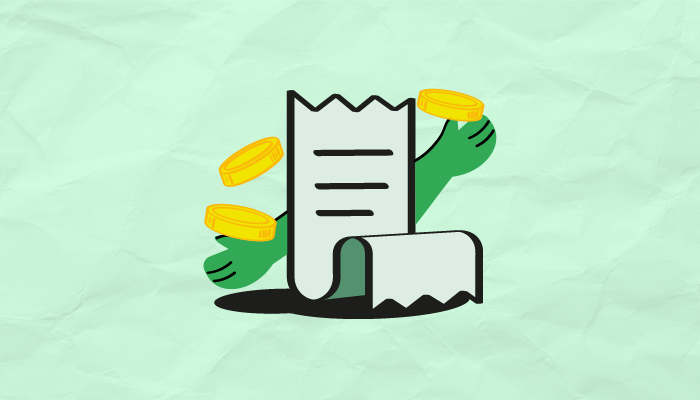- HOME
- Billing basics
- What is Recurring Billing? | Definition, Types Advantages - Zoho Billing
What is Recurring Billing? | Definition, Types Advantages - Zoho Billing

Recurring billing is a payment model that enables business owners to charge their customers at predefined intervals (weekly, monthly, annually, or custom intervals), for the products or services they purchase.
It is often used in subscription business — when the customer subscribes to a product or service, they are prompted to provide their payment information and agree to permit the business owner to automatically deduct the proper amount from their account periodically.
What sort of businesses is recurring billing most suited for?
Recurring billing can be used by any business which offers its services on a recurring basis.
Some common examples of businesses that use recurring billing are:
Telecom businesses that provide usage-based (metered) billing
Newspaper and magazine subscriptions
Gym memberships
SaaS applications like Google Apps, Slack, or Dropbox
Are subscription and recurring billing the same?
The terms subscription billing and recurring billing are used interchangeably because they are similar in most ways. Both subscription and recurring billing involve an auto-pay system, storage of customer's payment information, and periodic withdrawal of credit from the customer's account. Apart from auto-charging, other payment methods like cash and check are allowed in both subscription systems and recurring billing.
The main difference between them is the pricing plans. Subscription businesses can have multiple pricing plans, where the customers have the choice to move to a higher or lower plan at any time as per their business needs. However, in recurring billing, having different tiers of pricing is not necessary because irrespective of the pricing plan, the billing mechanism remains the same.
Note that recurring billing is suitable for any type of business, not just subscription businesses, although it is predominantly used by subscription businesses.
What are the types of recurring billing?
Recurring billing can be divided into two categories:
Fixed, or regular recurring billing
Variable, or irregular recurring billing
Fixed billing
In fixed billing, the same amount is collected from the customer in every payment cycle. Fixed recurring billing is best suited for businesses that provide services for a fixed price. Newspaper subscriptions and gym memberships are typical examples.
Fixed billing guarantees stable and continuous revenue for the business, and provides good prospects for upselling.
Variable billing
In variable recurring billing, the amount collected from the customer might change in every payment cycle. The customer's usage of the product is tracked in order to create a new, dynamic bill for each cycle.
Variable billing can be further divided into metered and quantity-based billing:
Metered billing
Metered billing is a system of charging customers recurrently based on their usage of the service. It's also known as usage-based billing. Popular examples include internet services and utility bills.
Typically, a subscription that uses metered billing has a base plan and customers are charged additionally for any use beyond the coverage of the base plan.
Quantity-based billing
In quantity-based billing, the customers are billed based on a quantity that was agreed upon when they purchased. For instance, SaaS providers often charge customers based on the number of licenses or seats purchased. Another popular example is volume-based cloud storage services.
What are the advantages of recurring billing?
Recurring billing is widely adopted because of the benefits it offers to both customers and business owners.
Predictable cash flow into the business
Recurring billing provides a consistent and reliable cash flow for a business. This helps the business owner to predict the revenue that will be generated in a specific time frame.
Saves time for both customers and business owners
In a recurring billing system, customers only need to sign up and provide their payment information once, with the understanding that the business owner will be paid automatically for the services they provide. This " set it and forget it " mechanism relieves the customers of the task of making sure the bill is paid every cycle.
For businesses, since the customers are automatically charged promptly in each cycle, recurring billing significantly reduces the chances of delayed payments and non-payments, which saves follow-up time.
Entirely automated
In a recurring billing system, the process of charging customers recurrently is entirely automated. Once the invoice is created, the payment cycle is set, and the customer's payment information is linked, the customer will be billed and charged for the service without any further manual intervention. This automated mechanism saves both the business owner and the customer from doing the same task every billing cycle.
What are the challenges in recurring billing?
Despite its many advantages, businesses using a recurring billing model may also face some challenges.
Payment failures
Payment failures can occur in recurring billing due to card expiration, insufficient funds, or incorrect card data. It is important for businesses using recurring billing to have a plan to deal with these types of payment failures.
Using good subscription management tools is a good way to recover failed payments. Dunning management can help by retrying the customer's card after a predefined period. If that fails too, the business owners and customers can both be notified of the payment failure so they can resolve it together.
Payment security
Payment security is crucial in every business, and recurring billing is no exception. Protecting customers' sensitive payment data from digital fraud is a huge responsibility. Subscription management tools that implement strong PCI compliance can help you safeguard sensitive data according to industry standards. In order to further reduce the likelihood of fraudulent payment processing, fraud detection and prevention tools can be integrated with your recurring billing system.
Handling payment errors
When a payment error occurs, the process of notifying customers can become cumbersome, especially when your customer base is growing. An efficient recurring billing system should make this easier for you. For example, the system can allow authorized customers to make changes to their payment information in the self-service portal before their next payment is processed.
Key Takeaway
Recurring billing is a mechanism that allows a business to receive ongoing payments, but get card information from the customer only once. It is similar to a subscription system in many ways but doesn't necessarily involve the pricing tiers that a subscription system may include. Recurring billing is helpful for business owners because it guarantees a predictable cash flow, and the entirely automated setup saves time and resources. A good recurring billing system can be implemented with the support of the right subscription management tools to tackle challenges like payment failures and fraudulent payments.
Try Zoho Billing that automate your recurring billing process and sends out professional-looking invoices based on the billing frequency on your behalf. All you need to do is set up billing frequencies and cycles for your product or service and cool off!
